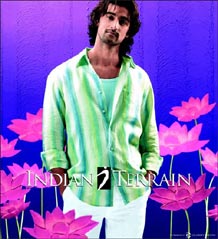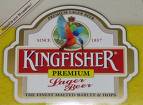Company: Nestle
Agency : O&M
Brand Count : 172
Nestle Fresh N Natural dahi is a bold step by Nestle to brand the commodity called Dahi( curd). 2006 saw the high profile re-launch of this product . Nestle dahi was launched in 2001. The reason behind this move to enter into a tough commodity business is prompted by the size of the market. Dahi ( Hindi term for Curd) is the second largest form of milk usage following tea and coffee usage in households. The estimated consumption of curd is a whopping 2200 MT a day i.e. in revenue terms Rs 4.5 crore a day . That makes the market worth Rs 1600 crores. The market is largely dominated by regional players and more than that households make their own curd using milk. The business sense that prompted Nestle to enter this segment is that there is no national player in the market, although Amul has serious plans for the segment.
the size of the market. Dahi ( Hindi term for Curd) is the second largest form of milk usage following tea and coffee usage in households. The estimated consumption of curd is a whopping 2200 MT a day i.e. in revenue terms Rs 4.5 crore a day . That makes the market worth Rs 1600 crores. The market is largely dominated by regional players and more than that households make their own curd using milk. The business sense that prompted Nestle to enter this segment is that there is no national player in the market, although Amul has serious plans for the segment.
 the size of the market. Dahi ( Hindi term for Curd) is the second largest form of milk usage following tea and coffee usage in households. The estimated consumption of curd is a whopping 2200 MT a day i.e. in revenue terms Rs 4.5 crore a day . That makes the market worth Rs 1600 crores. The market is largely dominated by regional players and more than that households make their own curd using milk. The business sense that prompted Nestle to enter this segment is that there is no national player in the market, although Amul has serious plans for the segment.
the size of the market. Dahi ( Hindi term for Curd) is the second largest form of milk usage following tea and coffee usage in households. The estimated consumption of curd is a whopping 2200 MT a day i.e. in revenue terms Rs 4.5 crore a day . That makes the market worth Rs 1600 crores. The market is largely dominated by regional players and more than that households make their own curd using milk. The business sense that prompted Nestle to enter this segment is that there is no national player in the market, although Amul has serious plans for the segment.Nestle has launched the brand with a positioning based on the taste. The tagline was ‘ Jumm gaya Taste” meaning “ Great taste. The launch was a soft one and was concentrated on Delhi. The competition was in the form of Mother Diary and Amul.In 2002 Nestle launched a value added variant in the form of Fruit n Dahi.
2006 s aw the relaunch of this brand on a different positioning. The brand is positioned as a calcium rich and creamy product with lot of emotions added to it. The brand is following the typical technique of differentiating by value addition ( rich creamy and calcium rich) and emotion ( pure, love ). The brand is also having raita ( another common Indian curd based dish).The relaunch is also limited to metros because of supply constraints.
aw the relaunch of this brand on a different positioning. The brand is positioned as a calcium rich and creamy product with lot of emotions added to it. The brand is following the typical technique of differentiating by value addition ( rich creamy and calcium rich) and emotion ( pure, love ). The brand is also having raita ( another common Indian curd based dish).The relaunch is also limited to metros because of supply constraints.
2006 s
 aw the relaunch of this brand on a different positioning. The brand is positioned as a calcium rich and creamy product with lot of emotions added to it. The brand is following the typical technique of differentiating by value addition ( rich creamy and calcium rich) and emotion ( pure, love ). The brand is also having raita ( another common Indian curd based dish).The relaunch is also limited to metros because of supply constraints.
aw the relaunch of this brand on a different positioning. The brand is positioned as a calcium rich and creamy product with lot of emotions added to it. The brand is following the typical technique of differentiating by value addition ( rich creamy and calcium rich) and emotion ( pure, love ). The brand is also having raita ( another common Indian curd based dish).The relaunch is also limited to metros because of supply constraints. This is a bold move by Nestle to enter into a highly commoditised market. Here the brand faces stiff competition from tradition rather than other companies. The changing psychographics of the Indian consumer may aid the brand. The lack of time to prepare the perfect dahi may prompt Indian consumer to stock this brand in the house. The longer shelf life of this brand may also come to help. But the task is not enviable in the sense that it takes lot of money and patience to change Indian consumer’s habits.
Source: magindia,nestle.in,agencyfaqs,businessline









